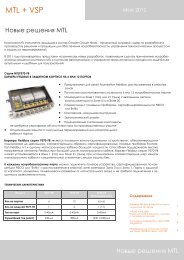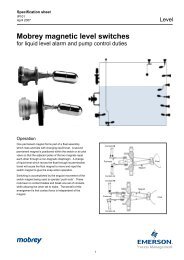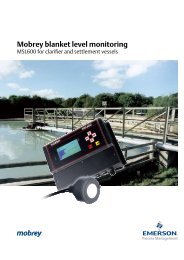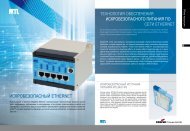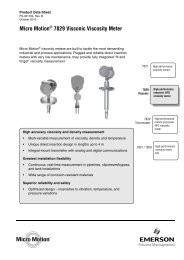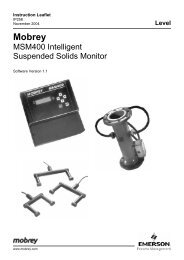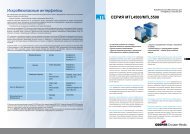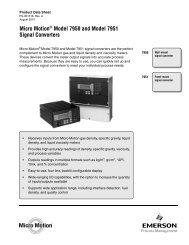You also want an ePaper? Increase the reach of your titles
YUMPU automatically turns print PDFs into web optimized ePapers that Google loves.
Field terminals - Screw clampGeneralA field terminal is a replaceableunit for terminating the wiringfrom the field devices. Each I/Omodule requires its own fieldterminal and the correct type isrecommended on the individualI/O module data sheet.The field wiring is terminated onscrew terminals that can take up to2.5mm 2 wire. By wiring virtuallydirectly to the I/O module there isno need for additional patching orterminations.The field terminal attaches to themodule carrier first; the I/Omodule is then mounted on it. Apair of multipin connectors linkthe field terminal to the I/Omodule.Fusing & loop-disconnectField terminals are available that contain areplaceable fuse or a “loop-disconnect” linkfor each channel. Fuses have a 2A ratingand, like the links, have a mechanicalfeature that allows them to be partiallywithdrawn. This provides a break in the fieldwiring loop which assists servicing and faultfinding in the field.Thermocouple modulesThermocouple modules require specific fieldterminals. The thermocouple modules –8105-TI-TC (4-channel) and 8205-TI-IS(8-channel IS) – each have their ownspecific field terminal containing a coldjunction compensation sensor. The 8205-TI-IS can also accommodate a remote coldjunction – if used, it occupies one of the eightavailable channels.RTD modulesThe RTD modules, 8106-TI-RT (4-channel)and 8206-TI-IS (8-channel) use fieldterminals that are specifically designed toaccommodate 2, 3 and 4-wire connections.The field terminals incorporate diodes thatbecome forward biased if a channelbecomes open circuited - ensuring that otherchannels are not affected by this situation.Similarly, an RTD can be removed from, ornot fitted to, a channel without affecting theoperation. The points where theenergisation current enters and leaves thefield terminals are shown by the symbolsI+ and I–, respectively, on the appropriatediagrams.IS field terminalsParticular field terminals are required formodules with built-in IS interfaces, and fieldterminals are coloured blue to mark thisdifference.Tagging stripA tagging strip is supplied with eachterminal (with the exception of the masstermination assemblies). A card is providedfor the user to mark the channel assignmentsfor the field wiring and this is protected by aclear plastic panel.Mechanical key codingField terminals are an important link in thefield connection process and a mechanicalkeying technique is used to preventincompatible modules from beingconnected accidentally to a field circuit. Thisavoids inadvertent damage to I/O modulesand field wiring, and maintains safety inhazardous area applications. It isimplemented in two complementary ways.Rotatable keysA pair of mechanically rotatable keys formpart of the field terminal (see diagrambelow) and these are set by the user duringinstallation to match the fixed key-code(e.g. A 1) of the I/O module that will befitted onto it. A module with a different keycodecannot then accidentally be fitted onthat field terminal.KeywaysThe four types of field terminal: generalpurpose, non-incendive, non-arcing andintrinsically safe, have a further pattern ofkeys that make each type unique; modules ofa corresponding type have a matchingkeyway. It is therefore impossible toimplement a potentially hazardouscombination of module and field terminal.The four types of field terminal can beidentified from the diagram below.General PurposeNon-Incendive(2/2)Non-Arcing(2/2)FEFEFERotary keys onfield terminalsADADADB 6C 5B 6C 5B 6C 5141414232323Intrinsically Safe(2/1)FEADB 6C 51423Keys to matchkeyways onmodulesEUROPE (EMEA) Tel: +44 (0)1582 723633 Fax: +44 (0)1582 422283AMERICAS Tel: +1 603 926 0090 Fax: +1 603 926 1899ASIA PACIFIC Tel: +65 487 7887 Fax: +65 487 7997E-mail: enquiry@mtl-inst.com Web site: www.mtl-inst.comJan 2007



